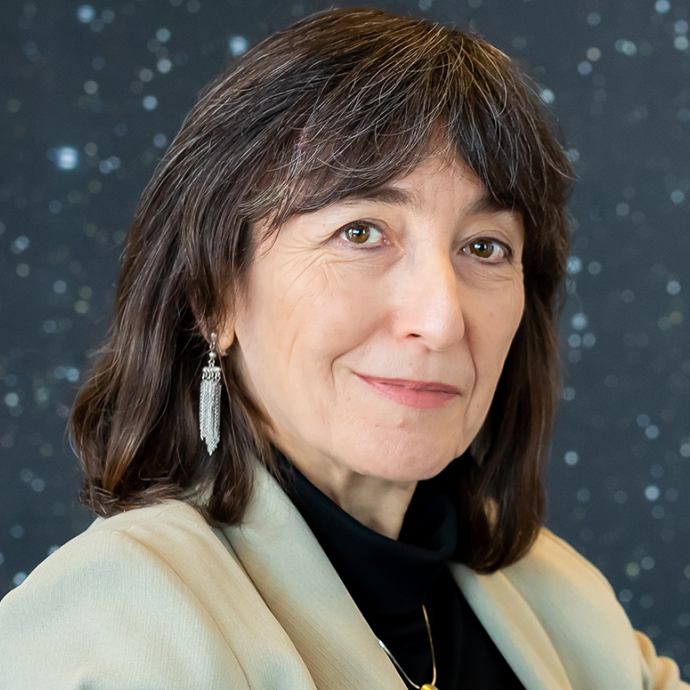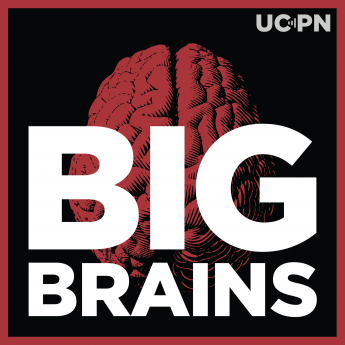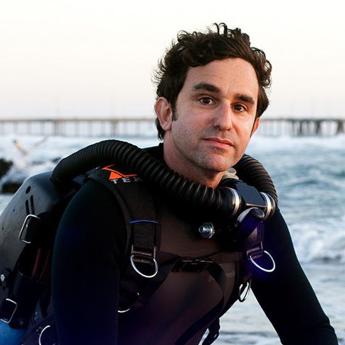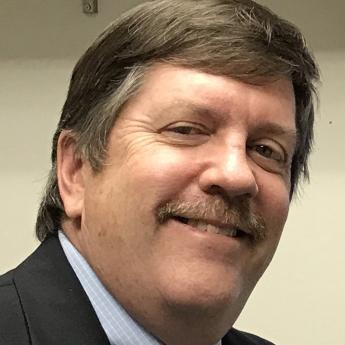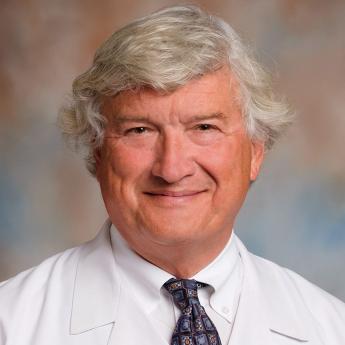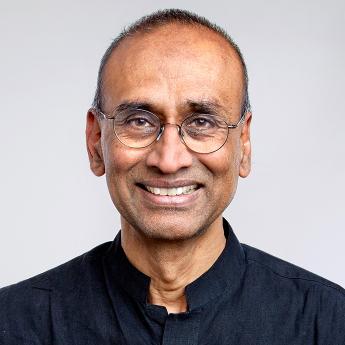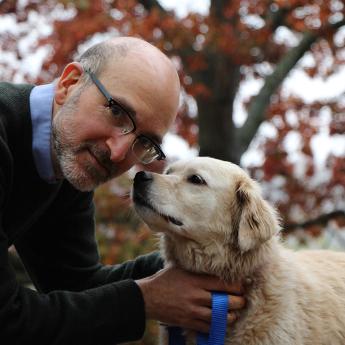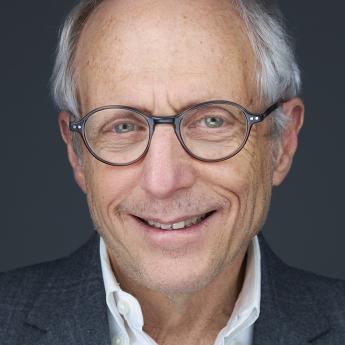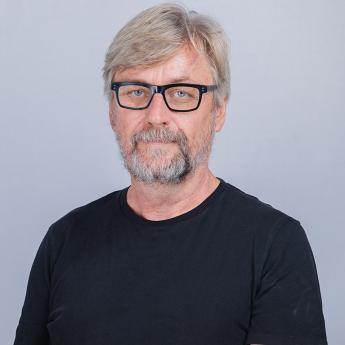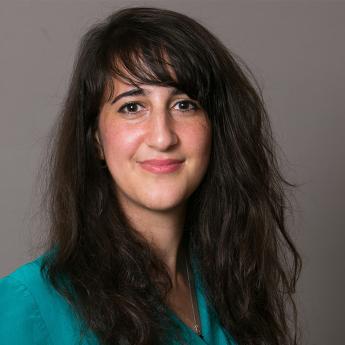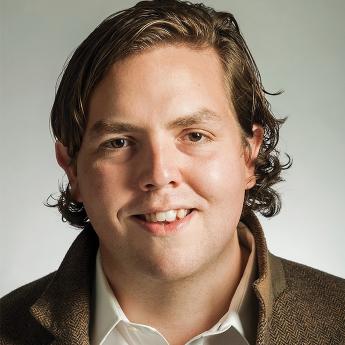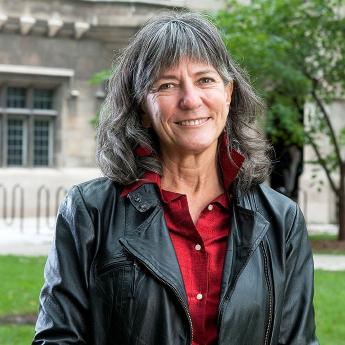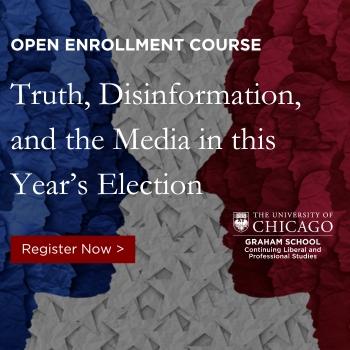Show Notes
How old is the universe—and how fast is it expanding? These are part of one of the biggest—and most contested—questions in science, and the answers could change our understanding of physics.
In this episode, we talk with renowned UChicago astronomer Wendy Freedman, who’s spent decades trying to solve these very questions. There are two ways to measure how fast the universe is expanding, also known as the Hubble constant; Freedman has done groundbreaking research to calculate this number using stars, but the problem is, her numbers don’t match up with scientists using a different method. And the implications of that difference are massive, because it could indicate that our Standard Model of physics could be broken.
Yet Freedman’s latest research, using the powerful James Webb Space Telescope, might finally give us a clearer answer. In our conversation, we explore the age of the universe, the mysteries of dark matter and what all this could mean for the future of physics—and maybe even the discovery of life beyond Earth.
Subscribe to Big Brains on Apple Podcasts and Spotify.
(Episode published October 3, 2024)
Subscribe to the Big Brains newsletter.
Please rate and review the Big Brains podcast.
Related:
- In an epic cosmology clash, rival scientists begin to find common ground — Science News
- New Webb Telescope data suggests our model of the universe may hold up after all — UChicago News
- The Webb Telescope Further Deepens the Biggest Controversy in Cosmology — Quanta Magazine
- Could JWST solve cosmology’s big mystery? Physicists debate Universe-expansion data — Nature
- ‘It could be profound’: How astronomer Wendy Freedman is trying to fix the universe — Live Science
Transcript:
Paul Rand: There has been a debate, a controversy, a mystery in the fields of cosmology and physics that has stumped scientists for decades.
Wendy Freedman: We didn’t know the age of the universe to better than a factor of two. Was the universe 10 billion years old or 20 billion years old?
Paul Rand: That’s Wendy Freedman, professor of astronomy and astrophysics, speaking at a debate at the American Natural History Museum in March of this year.
Tape: So you are on the main paper that established that settled that argument. And so where did the age of the universe show up on that paper back then?
How old is the universe?
Wendy Freedman: 13.7 billion years.
Tape: Sounds like you nailed it.
Paul Rand: But that's when things got complicated. Years later other scientists would make a different measurement. One that would creat this debate.
Michael Boylan-Kolchin: There’s an alternate way you can measure that age, and that’s with the cosmic microwave background, the light from the earliest phases of the universe and studying its properties statistically tells you about the components.
Tape: Wait. Wait. So how did you get the age of the universe if you didn’t use the microwave background, what did you do?
Wendy Freedman: So we’re measuring galaxies nearby and we’re measuring how far away they are and what velocities they’re moving at-
Tape: At the expansion of the universe.
Wendy Freedman: ... and that’s the expansion of the universe, which you can extrapolate backwards, essentially using a cosmological model and determine the age of the universe.
Tape: All right, so now you’re going to not look at galaxies. You got to back door to the age of the universe.
Michael Boylan-Kolchin: That’s right. We’re looking actually the other edge of the universe, as far away as we can see, the very first light in the universe. And that tells us properties of the universe at the very earliest times. And that, combined with a cosmological model, also gives us an age. And that age is 13.8 billion years with an uncertainty of only 20, 25 million years on it.
Why is there disagreement around the Hubble Constant?
Tape: So you want us to care that her answer is 13.7, your answer is 13.8?
Paul Rand: So yes, why should we care? Well, that small difference could be evidence that there is something wrong with our understanding of physics. Something missing that could explain many of the mysteries of our universe.
Wendy Freedman: So there are at least a couple possibilities, right? There might be something wrong with the data that is misleading us, or it could be that there’s something missing in our model, our standard model that has the dark energy and dark matter we’ve been talking about, and that there’s another physical something that we have not yet discovered. And this might point to that.
Paul Rand: This is the biggest story you probably haven’t heard of. The kind of debate happening quietly in the back rooms of universities and academic institutions. Either you need to throw out all those old textbooks or maybe we just need a bigger telescope.
Tape: NASA’s mission to journey beyond the Stars is officially underway. The space agency got exactly what it wanted for Christmas with the successful launch of the James Webb Space Telescope.
Paul Rand: Since that debate at the Natural History Museum, Freedman has published a new measurement of the age of the universe, and this new calculation brings us closer than ever before to resolving the controversy.
Wendy Freedman: Well, I think part of all of us, and myself included, should be interesting to find something new, right? A discovery. There’s something new about the universe that we don’t know and that the standard model isn’t right.
Paul Rand: And since she’s right across the quad here at the University of Chicago, we had to have her on the podcast to walk us through this incredible story.
Wendy Freedman: The standard model right now is something we don’t understand yet. And the dark energy, two thirds of the overall matter energy density in the universe is in a form we don’t understand. There’s no physical explanation for it. So I think there’s a real openness and interest, excitement in the idea, okay, we don’t yet understand the standard model.
Paul Rand: Welcome to Big Brains where we translate the biggest ideas and complex discoveries into digestible brain food. Big Brains, little bites from the University of Chicago Podcast Network. I’m your host, Paul Rand. On today’s episode, measuring the age of the universe. The University of Chicago Leadership and Society Initiative guides accomplished executive leaders in transitioning from their longstanding careers into purposeful encore chapters of leadership for society. The initiative is currently accepting candidates for its second cohort of fellows. Your next chapter matters, for you and for society. Learn more about this unique fellowship experience at Leadforsociety.uchicago.edu.
How would you go about calculating the age of the universe? It’s not like there’s a birth certificate lying around in some cosmic filing cabinet. There are different methods, but they all revolve around something called the Hubble constant.
How do you calculate the age of the universe?
Wendy Freedman: The Hubble constant measures how fast the universe is expanding at the current time. It’s the parameter that allows us to calculate how old the universe is and how big the universe is.
Paul Rand: Anytime somebody hears the word expanding, I’m sure thoughts immediately come to mind, something moving beyond, or going beyond the parameters that it has. Can you talk about when you say the universe is expanding it’s a little harder to conceptualize?
Wendy Freedman: Our tendency is to think of things that we know. If you think of an explosion or a sponge expanding in a cup or something of that nature, something is expanding into something else. That’s our everyday experience. But with the universe, it’s space itself that is expanding. It’s not expanding into something. It’s space is literally being created as the universe is expanding.
Paul Rand: And will there ever be a point where you would expect the universe to stop expanding?
Wendy Freedman: That would depend on the composition of the universe. So if the density of matter were high enough, if we throw a ball into the air, that ball will be attracted back down to the earth because of the gravitational force. But if you give the ball enough of a kick, say like a rocket, it could keep expanding literally forever. So it depends on how much matter there is in the universe. And until the last few decades, in fact, we thought it was possible that there’d be enough matter in the universe, that matter density would be high enough, it could contract back on itself, and there might be an oscillating universe. So not just a hot big bang phase, but it would collapse back upon itself maybe be a big crunch.
But the most recent observations suggest that there isn’t enough matter relative to a new discovery, a form of energy, that’s actually causing the universe to speed up in its expansion, what we call dark energy. So it appears from what we have learned in the last couple of decades that the universe is going to keep expanding forever.
How fast is the universe expanding?
Paul Rand: Trying to calculate just how fast that expansion is happening has a long history. And Freedman is just the latest main character in that story. It all started with someone named Henrietta Swan Leavitt.
Wendy Freedman: Henrietta Swan Leavitt was working at the Harvard College Observatory over a century ago now, and she was measuring stars. They are called Cepheid variables. And she discovered that their outer atmospheres are actually in motion. And the rate at which the atmosphere is moving is related to how bright the star is. The brighter the star, the slower the period of variation. The fainter the star, the faster it’s pulsating. If you could measure these Cepheid stars nearby where you knew how bright they were, so measure their distance, you get how intrinsically bright they are, and then you could measure these stars in other objects farther away.
So for example, if you look at car lights or a lamppost in the distance that gets fainter the farther and farther away the light is. And that’s extremely helpful in the sense that if we could measure then how bright these Cepheids appear to be, then we already know how bright they should be, what their intrinsic brightness is just by the inverse-square law of distance that we can determine the distance to the galaxy. And that’s what Edwin Hubble did.
Paul Rand: Edwin Hubble, a graduate of the University of Chicago, would become a cosmological icon who would lend his name to one of modern history’s most famous telescopes. But that comes later in the story. First, he would coin the concept of the Hubble constant.
Wendy Freedman: He was able to find Cepheids in these other nebulae, they were called at the time, and measure their distances. And he found that they were indeed very far away. And more than that, there was another astronomer, Vesto Slipher, who had already measured the velocities of these galaxies, the speeds at which they were moving, and Hubble discovered that they were correlated. The farther away a galaxy is, the faster it’s moving. And that’s what led to this picture of an expanding universe.
What is the Hubble Constant?
Paul Rand: In 1929, Edwin estimated the very first calculation of the Hubble constant to be 500 kilometers per second per megaparsec. Ironically for its name, this would be the first of many fluctuating calculations of the so-called constant. Freedman would contribute her own first estimate it 2001.
Wendy Freedman: It was huge news because at that time people were debating is the Hubble constant 50 or is it 100? If it was 50, then the universe was 20 billion years old. And if it was 100, it was only 10 billion years old. So we didn’t know the age of the universe to better than a factor of two at that point. And then the Hubble Space Telescope was launched.
Tape: Four, three, two, one. And liftoff of the space shuttle Discovery with the Hubble Space Telescope, our window on the universe.
Wendy Freedman: And just before that, we got new detectors in astronomy. And the detector that Edwin Hubble and up until the 1980s astronomers had to use were glass photographic plates. And these just didn’t have nearly the kinds of accuracy that we now have with electronic solid state devices, the devices we now have in our phones, in fact. But they became available at astronomical observatories in the 1980s. And they were almost 100 times more sensitive, and those got flown on Hubble.
Tape: This is Mission Control Houston, PDRS officer in the control room here confirms the Hubble Space Telescope is released.
Tape: The shuttle is now keeping its distance from the space telescope as scientists make final adjustments before we get to see the clearest pictures ever seen in the history of astronomy.
Wendy Freedman: And those detectors not only could measure blue light, optical radiation, but also toward the red part of the spectrum. It allowed us to make measurements that were much more accurate and we could solve for the first time, resolve this debate over a factor of two. So we measured a value of 72 or 73 for the Hubble constant. And not to know the age to a factor of two, that’s a pretty big difference. Are you 35 or 70? It’s a big difference. And so many other things in cosmology and astronomy depended on knowledge of the Hubble constant. And so having that finally straightened out, it was met with a lot of excitement. And for a while we thought we were done in cosmology.
Paul Rand: But they weren’t.
Wendy Freedman: It became possible to make measurements of tiny differences in the temperature of the background radiation, the remnant radiation from the Big Bang. You can then predict based on those observations, which are really high accuracy, either they’re measuring one part in a hundred thousand, it’s just a spectacular measurement. And they get a different value for the Hubble constant than some of the measurements that we’re getting locally by directly measuring the Hubble constant. And so they don’t match up, these two values. We’re measuring the expansion rate locally with the Cepheids. Well, we measure it with the Cepheids. That’s what happens. And when you measure it using the microwave background observations and come to the present day, they don’t hit each other. They’re off by about 9% or so.
Paul Rand: 9% may seem small, but the implications of that number are massive, because the discrepancy means that either the measurements are wrong or there is something broken in our standard model of physics.
Wendy Freedman: And there’ve been now probably at this point, over a thousand papers that have been written to try and explain this what people have called the Hubble tension. This difference between the microwave background and what we measure locally. But no one’s been able to come up with an explanation. It just doesn’t naturally arise. And there may be something wrong with the standard model, something missing, some fundamental piece of physics that we didn’t know about
Paul Rand: And we were basically stuck there until three years ago.
Tape: Decollage liftoff from a tropical rainforest to the edge of time itself.
Tape: James Webb begins a voyage back to the birth of the universe.
Paul Rand: The James Webb Telescope, our latest most advanced way of peering into the universe, has allowed Freedman to just recently make a brand new calculation of the Hubble constant. One that brings us closer than ever to resolving the Hubble tension. That’s after the break.
Have you ever wondered who you are but didn’t know who to ask? Well then join Professor Eric Oliver as he poses the nine most essential questions for knowing yourself to some of humanity’s wisest and most interesting people. Nine Questions with Eric Oliver, part of the University of Chicago podcast network.
As exciting as it may be that discover that there is something missing from our standard model of physics, throughout the history of the Hubble Tension there has always been another possibility: the tools we’re using just aren’t advanced enough.
Wendy Freedman: Have these measurements been made to high enough accuracy that you can actually say there’s a significant difference? And so when JWST was launched, we set out to measure the Hubble constant to even higher accuracy. It’s a larger telescope. Hubble has a 2.5 meter diameter mirror. And JWST, which is the James Webb Space Telescope, has a 6.5 half meter mirror. And it is optimized to look in the infrared part of the spectrum, whereas Hubble was optimized to look in the optical part of the spectrum. Was a great machine for discovering Cepheids because these Cepheid variables do most of their variation in the blue part of the spectrum and most of the things that can affect your measurement, for example, there is dust between us and the stars that we’re measuring and we have to account for the presence of this dust. And that’s best done at infrared wavelengths where you’re not as affected by the presence of the dust.
And so JWST has four times better resolution, that is the clarity with which we can measure these objects, is improved by a factor of four. And the farther away something is, you look at something far away, it’s smaller in the distance, so it gets compressed into a... We look at it with our detector and it’s going to smoosh in all these stars together. They’re going to get crowded with each other and it’s going to be hard to get an accurate measurement of the Cepheid or the tip of the red-giant branch star, whatever we’re using, the farther away it is. So JWST offers the possibility of disentangling these stars that have become really hard to resolve with Hubble. And it has 10 times the sensitivity, so we get bigger signal from JWST.
So our proposal was not just to rely on Cepheids and put everything in one basket. If we use only one method and there’s something that we don’t yet understand about the method, we can make the measurements as many, many times as we’d like, but we’re still going to get the same kind of answer without ever knowing that something’s wrong. So we propose to use two other methods in addition to the Cepheids, the tip of the red-giant branch stars and a new method we develop called these are JAGB stars. They’re red carbon stars that have a very small scatter in their luminosity, so they make a very good distance indicator.
And all three methods we applied to the same galaxies. So we’re using the same telescope, the same filters, the same detectors, everything’s the same. We’re measuring it three different ways. And if there are differences, then we can say, “Okay, how well can we actually measure the distances? Are there systematic effects in one or more of the methods?” And by combining them, then we essentially average over any uncertainties and we get a much more robust measurement in the end by combining three measurements instead of relying on one type.
And we have also used two different kinds of distant objects. These are supernovae, which are explosions at the end of their lives, and we can see them farther into the universe. What we’re seeing now is that two of the methods agree really well and they happen to be the two methods that are least affected by the dust that I was talking about, or this crowding blending issue because we can observe them in the outskirts of galaxies where these effects are not important. In fact, they’re negligible, for the tip of the red-giant branch. And so the two other methods agree with each other, and the Cepheids are an outlier right now. And that’s just interesting.
And at this point, I don’t think we can say, I don’t want to say, “Okay, we know for certain that one is better than the other.” We just treat them as, okay, these are three independent measurements, let’s see what we get when we combine the measurements and get an overall more robust estimate of what the Hubble constant is. And what these observations are telling us is that, “Hey, wait a minute. Even when we are measuring the distances to the galaxies, which is the step before stepping out to measure the Hubble constant, we already have a disagreement.” And that disagreement isn’t telling us anything about fundamental physics in the early universe. That’s telling us that we better understand the distances better.
Now, having said that, we’re talking about a factor of two before. These agree to, in the case of the TRGB and JGB, the distances now agree at the 1% level, which is phenomenal.
Paul Rand: Remarkable.
Wendy Freedman: Yes, it’s unheard of really in this kind of measurement. And the measurement of the Cepheids, which is somewhat discrepant. It’s only different at the few percent level. So again, it’s a really good indication that we’re doing something right in measuring these distances. Now we can measure them to a few percent or better, and they don’t lead, when we then determine what the Hubble constant is, they don’t establish that there is this extraordinary claim of missing physics, that there’s something wrong with the standard model. They’re quite consistent with the standard model, which is interesting.
Again, you’ve got to be led by the data, right? If there’s extraordinary evidence, the quote, “Extraordinary claims require extraordinary evidence.” And what we’re saying is we don’t see extraordinary evidence, this does not meet the requirement of extraordinary evidence. But maybe in future with more data, there will be extraordinary evidence. But at this point, it really does not look that way.
Paul Rand: If there is one question as you continue these things and you say, “Man, if during my lifetime I could see an answer to this. Or get some additional clarity on this, it would just be even more extraordinary.” What do you dream about?
Wendy Freedman: I would like to see in my lifetime discovery of life elsewhere in the universe. I think the potential for doing that now is we’re getting close with the big telescopes that are going to come online in the next decade or so. I think that would be a pretty spectacular discovery, not just for astronomers, but I think all of humanity.
Paul Rand: Absolutely.
Wendy Freedman: It’s the things that would change our perspective of the universe that we live in. So I’m very excited. I hope I get to live to see that, but I also feel sometimes just maybe if I could have two, I’d love to come back in a hundred years.
Paul Rand: Sure, take two.
Wendy Freedman: I’d love to come back in a hundred years and see where cosmology is.
Paul Rand: I bet.
Wendy Freedman: I still ask myself sometimes, “Are we on the right track?” Or will there be something completely different, some new discovery that will be made that makes us realize, okay, just a slight or maybe a big change in perspective. We’ve been looking at this wrong and we’ve learned something else. But so I’d be very curious to come back in a century and maybe it’ll take longer. I don’t know. But what’s the dark energy? What’s the dark matter? I’d love to see that.
What is dark matter?
Paul Rand: We love a big mystery, and dark energy is certainly one of those. There are all kinds of theories, some weirder than others.
Wendy Freedman: The dark energy is essentially the contribution to the vacuum of space, the energy contribution. And we know from quantum mechanics that there are particles and antiparticles that form very, very quickly. They come in and out of the vacuum and they contribute energy to the vacuum. The problem is that if you add up the contribution from these virtual particles, then you end up with something that is 120 orders of magnitude larger than what we would see, and it’s just impossible. That is such a huge discrepancy. Nobody knows how to explain it. Nobody knows how to solve this.
So again, somebody somewhere is going to have to come up with a really good idea. It’s probably going to be a theory that will explain this. And perhaps we’ll get some indication from observations, which is again, why these kinds of observations are interesting because maybe they are telling us something about where we don’t understand something in the standard model. Now, where we are now is that the theories that people have been coming up with to try and explain the Hubble tension actually make the problem worse in other places that they make other tensions worse. So there’s nothing that has emerged that is an obvious solution. So I hope some young people out there who are entering the field, there’s lots of discovery space that’s open and available.
Paul Rand: Somebody in my shoes will come and ask somebody, “What would you say to Wendy Freedman now?” And so we’ll tune out for a hundred years and see what they would’ve asked you.
Wendy Freedman: Great. Okay.
Matt Hodapp: Big Brains is a production of the University of Chicago Podcast Network. We’re sponsored by the Graham School. Are you a lifelong learner with an insatiable curiosity? Access more than 50 open enrollment courses every quarter. Learn more at Gram.uchicago.edu/bigbrains. If you like what you heard on our podcast, please leave us a rating and review. The show is hosted by Paul M. Rand, and produced by Leah Ceasrine and me Matt Hodapp. Thanks for listening.
Episode List
Learning to speak to whales using AI, with David Gruber (Ep. 137)
Scientist discusses how Project CETI is deciphering the Morse code-like ‘alphabet’ of sperm whales
Storm warning: Why hurricanes are growing beyond measure, with Michael Wehner (Ep. 136)
Scientist proposes a new Category 6 for hurricanes, calculates the growing cost and impact of climate change
How to manifest your future using neuroscience, with James Doty (Ep. 135)
‘Mind Magic’ author explains the scientific research on how to train our brain to achieve our goals
Why we die—and how we can live longer, with Nobel laureate Venki Ramakrishnan (Ep. 134)
Nobel Prize-winning scientist explains how our quest to slow aging is becoming a reality
What dogs are teaching us about aging, with Daniel Promislow (Ep. 133)
World’s largest study of dogs finds clues in exercise, diet and loneliness
Where has Alzheimer’s research gone wrong? with Karl Herrup (Ep. 132)
Neurobiologist claims the leading definition of the disease may be flawed—and why we need to fix it to find a cure
Why breeding millions of mosquitoes could help save lives, with Scott O’Neill (Ep. 131)
Nonprofit's innovative approach uses the bacteria Wolbachia to combat mosquito-borne diseases
Why shaming other countries often backfires, with Rochelle Terman (Ep. 130)
Scholar examines the geopolitical impacts of confronting human rights violations
Can Trump legally be president?, with William Baude (Ep. 129)
Scholar who ignited debate over 14th Amendment argument for disqualification examines upcoming Supreme Court case
What our hands reveal about our thoughts, with Susan Goldin-Meadow (Ep. 128)
Psychologist examines the secret conversations we have through gestures
